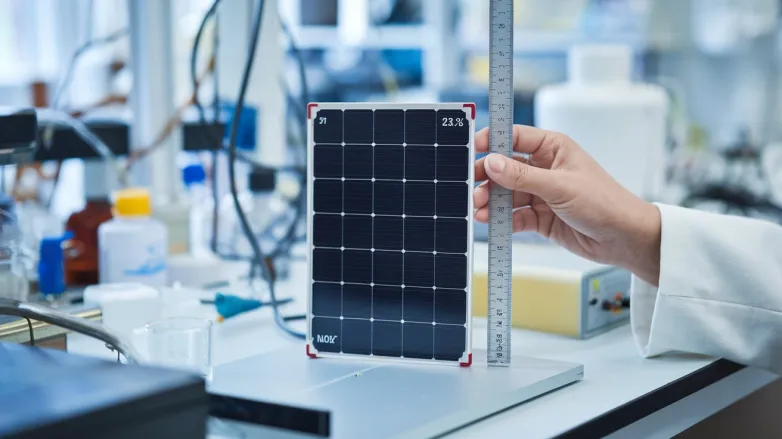Breakthrough Ultrathin Solar Cell Enhances Light Absorption
- Innovative ultrathin perovskite solar cells soar with efficiencies over 27%, optimizing light absorption and paving the way for next-gen renewable energy solutions.

Researchers from the Chinese Academy of Sciences and other institutions have developed an innovative ultrathin perovskite solar cell that achieves efficiencies exceeding 27%. The design incorporates a Gires-Tournois resonator and a silver-backed mirror, optimizing light harvesting and absorption capabilities. This configuration is aimed at enhancing light-matter interference effects, particularly in the 400-800 nm wavelength range, leading to an average absorptivity close to 85%.
The cell features layers of zinc oxide as an electron transport layer, a perovskite absorber, and nickel(II) oxide as the hole transport layer. The team reported that the cell's photoelectric conversion efficiency can reach approximately 26%, with potential peaks at 27% under optimal conditions. However, achieving these efficiency levels in commercial production would require specialized vacuum deposition techniques. Overall, the findings could advance the practical applications of ultrathin perovskite solar technologies.
What breakthrough advancements enable 27% efficiency in ultrathin perovskite solar cells?
Here are some additional insights into the breakthrough advancements that enable the ultrathin perovskite solar cells to achieve 27% efficiency:
- Gires-Tournois Resonator Integration: The implementation of a Gires-Tournois resonator within the design significantly enhances the interaction between light and the perovskite material, leading to improved absorption of specific wavelengths while minimizing reflection losses.
- Advanced Light Harvesting Techniques: By fine-tuning the resonator design, researchers effectively manipulate light paths, creating multiple passes of light through the perovskite layer. This maximizes the likelihood of photon absorption, especially in the critical 400-800 nm spectrum.
- Enhanced Absorption Characteristics: Achieving an average absorptivity of nearly 85% means that a significant proportion of incident light is absorbed rather than reflected, which is key to improving overall efficiency in converting light to electricity.
- Optimized Material Layering: The strategic layering of materials — including zinc oxide for electron transport, the perovskite absorber, and nickel(II) oxide for hole transport — allows for efficient charge separation and collection, which are crucial for maximizing the output of electrical energy.
- Nanostructured Interfaces: The introduction of nanostructured interfaces enhances the interaction between the organic and inorganic components within the perovskite layer, which optimizes charge transfer and minimizes recombination losses, further boosting efficiency.
- Environmental Stability Improvements: Recent advancements include enhancing the stability of perovskite materials against moisture and temperature fluctuations. This has been achieved through innovative encapsulation techniques or the use of more robust perovskite materials, which are essential for long-term performance in real-world applications.
- Dual-Junction Cell Configuration Potential: Researchers are exploring the possibility of combining ultrathin perovskite cells with other photovoltaic technologies in tandem configurations, which can exploit a broader spectrum of sunlight and improve overall electricity generation.
- Progress in Manufacturing Techniques: Ongoing research into scalable manufacturing methods, including roll-to-roll printing and low-temperature processing, is focused on overcoming the challenges presented by specialized vacuum deposition, thus making commercial production more feasible.
- Collaboration Across Disciplines: The success of this advancement is attributed to collaborative efforts among material scientists, optical engineers, and photovoltaic researchers, highlighting the multidisciplinary approach needed to tackle the complexities involved in advancing solar technology.
These advancements not only signify a leap in the efficiency of ultrathin perovskite solar cells but also pave the way for their potential commercialization and wider adoption in sustainable energy solutions.
Also read

